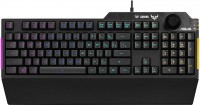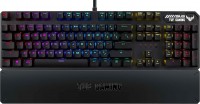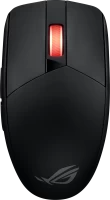Mice Asus series TUF Gaming
prices on 5 modelsAsus TUF Gaming
The components of the TUF series have a clearly recognizable visual style with a constant black and gold colour palette and a craving for minimalism. The lighting is always modest, the design is simple and, one might say, utilitarian, and the forms are classic. Obviously, with the help of such a visual language, Asus strives to separate the ROG/ROG Strix and TUF series as much as possible. The first ones are stuffed to the most I don't want and are designed for an experienced gamer, the second ones look more modest, will cost several times cheaper, but in experienced hands they can become very dangerous weapons.
 |
The TUF series is based on models with a classic curved shape and an emphasis on convenience. Non-slip plastic or a special soft-touch coating is most often used as the case material. Options with wireless connection are not found in this series. At least for the moment (note: August 2021). The form is most often designed for right-hand control, models with a symmetrical design are less common.
The sales engine is the Asus TUF Gaming M3 model, which was released in 2019 and immediately imposed serious competition with popular gaming mice up to $ 40. Having forked out $25, a potential buyer of the TUF M3 will receive a good, albeit not top-end Pixart PMW3325 optical sensor, long-lasting Omron switches for 20 million clicks, 4 additional buttons with the ability to write settings to memory and a simple RGB backlight with Asus Aura Sync synchronization.






